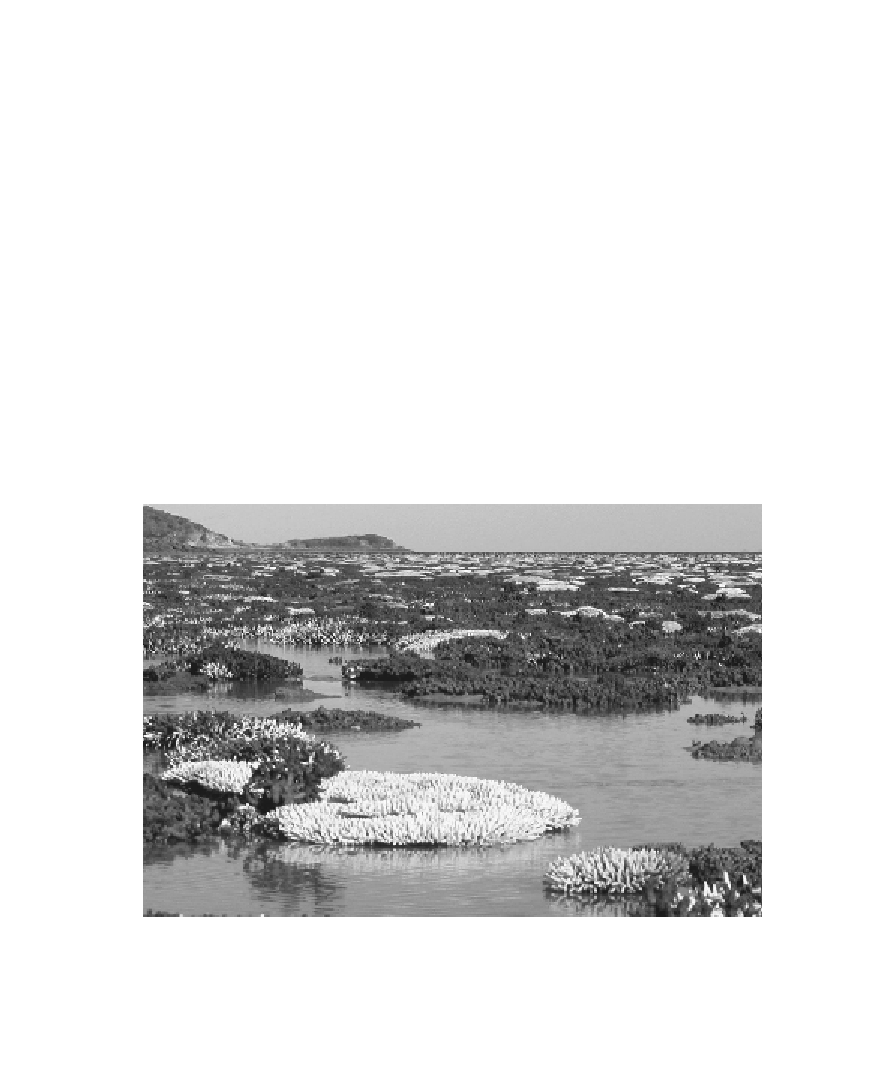Geoscience Reference
In-Depth Information
calcium carbonate skeletons of the coral colonies, and needs
low-
nutrient
and not high-nutrient settings (because the coral systems are
so efficient at recycling the few nutrients there are). Coral reefs are
therefore sensitive to nutrient levels, and have suffered as human-
made phosphates and nitrates have washed into them from the land;
seaweeds then grow at the expense of the corals. Corals are also sen-
sitive to temperature: if it gets too hot, the coral animals expel from
their tissues the symbiotic dinoflagellates (a type of single-celled pro-
tist) that they need to help them grow. The corals then lose their vivid
colours: they 'bleach', and usually die. In recent years there have been
major bleaching events, killing off large areas of coral during tropical
heatwaves (Fig. 17). Corals are also sensitive to disturbance, both phys-
ical (dynamiting, building, dredging) and biological (human hunting
fig. 17. Bleached coral, Great Keppel Island, eastern Australia, 2006. Intertidal
corals were badly damaged by excessively warm conditions.


Search WWH ::

Custom Search